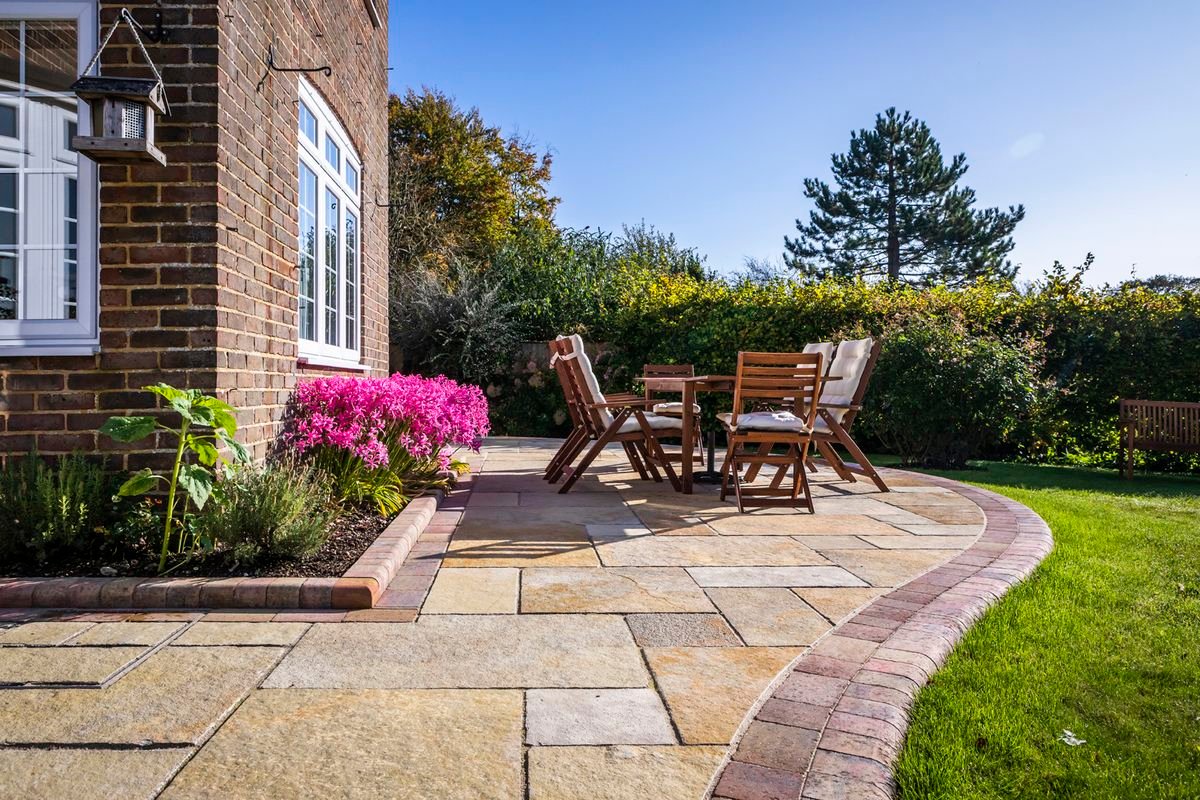Concrete is incredibly versatile. It’s not just for driveways; it’s perfect for transforming your garden. Here are five clever concrete ideas to inspire your next outdoor project. For more inspiration and information on concrete’s strength, style, and sustainability, check out our blog post on concrete strength, style, and sustainability.
Polished Concrete Patio: Modern Outdoor Living
A polished concrete patio creates a sleek, modern feel. It’s durable, low-maintenance, and withstands harsh weather conditions. The slip-resistant surface offers safety around pools and BBQ areas. Polishing levels range from a matte sheen to a high gloss. Finishes include salt and pepper, exposed aggregate, and coloured concrete. Stamping, stencilling, and acid staining create unique textures and patterns. Proper sealing protects against stains and wear. Consider lighter colours to reflect heat and reduce surface temperature. You can find more clever concrete ideas for your garden on our dedicated blog post about 5 clever concrete ideas. What are the pros and cons of different sealers? How often should sealing be done in your specific climate? What are the cost comparisons of different polishing levels and finishes?
-
Concrete Pathways and Stepping Stones: Enhance Your Garden’s Flow
Concrete pathways and stepping stones add charm and guide visitors through your garden. Winding pathways through greenery or stepping stones create a whimsical journey. Pathways can be straight for a formal look or curved for a natural feel. Width matters: wider paths encourage strolls, narrower paths create intimacy. Stepping stones allow unique patterns. Personalise them with engravings or mosaic patterns. For DIY pathways, use a concrete mix suitable for foot traffic. Compact the base for stability. Forms create clean lines. Consider pre-cast stepping stones for easy installation. Ensure pathways and stepping stones comply with accessibility guidelines for universal access. What specific concrete mix is recommended for your climate and soil conditions? What are some DIY tips for creating textured or patterned pathways and stepping stones? Where can I find accessible design resources and local regulations?

-
Concrete Fire Pit Area: Create a Cosy Gathering Spot
A concrete fire pit becomes the heart of your outdoor space, perfect for evening gatherings. Gather around a warm fire with friends and family. The fire pit area’s size depends on space and desired capacity. Place it safely away from flammable materials, adhering to local fire regulations. Built-in concrete benches or space for chairs provide seating. Integrate the surrounding landscape for a cohesive look. Choose from wood-burning, gas, or propane fire pits. Gas and propane offer convenience, while wood provides a traditional experience. What are the specific fire regulations regarding fire pit placement and construction? What are some design ideas for integrating the fire pit area with the existing landscape? What are the maintenance requirements for different types of fire pits?
Planning your outdoor space effectively is crucial for maximising its functionality and aesthetic appeal. A well-structured plan ensures that all elements work together harmoniously. Just as optimising a website for search engines requires a checklist, planning your concrete projects needs a similar approach.
-
Concrete Retaining Walls: Functional and Beautiful
Retaining walls are functional and add visual interest. They prevent erosion, create terraced levels, and enhance your garden. Terraced levels provide space for different plantings. Retaining walls can incorporate built-in seating. Choose materials and finishes that complement your landscape. Gravity walls use their weight for stability. Cantilevered walls use a footing and stem. Anchored walls are reinforced with cables or rods. Consult a structural engineer for complex projects. Check local regulations for permits and height restrictions. Plantings on terraced levels should have appropriate drainage and root systems. What are the best plants for your climate to use on terraced levels created by retaining walls? How do I determine the correct type of retaining wall for my specific needs and slope? Where can I find a qualified structural engineer?
-
Concrete Water Feature: Add Tranquility to Your Garden
The sound of water trickling over concrete creates a serene atmosphere. A water feature can be a small fountain or a cascading waterfall. Consider space and garden style. A small fountain adds charm. A larger pond attracts wildlife. Plants and lighting enhance the ambiance. Pumps and filtration systems keep the water clean. Proper drainage and water management prevent issues. Consider water conservation strategies. What are some effective water conservation techniques for water features? What are the best low-maintenance aquatic plants for ponds? What are the recommended pump and filtration systems for different sizes of water features?
-
Combining Concrete Elements: Create a Harmonious Outdoor Design
Combine concrete elements for a cohesive outdoor space. A patio flowing into a pathway leading to a fire pit creates a unified design. Integrate features seamlessly. A retaining wall can double as seating. A pathway can lead to a hidden garden nook. What are some examples of successful combinations of concrete elements in gardens? Are there any specific design considerations for integrating concrete elements in a tropical climate?
Maintaining Your Concrete Creations: Ensuring Long-Lasting Beauty
Regular maintenance preserves concrete’s beauty. Sweep regularly. Wash occasionally with mild detergent and a stiff brush. Avoid harsh chemicals. Seal concrete every 1-3 years to protect against stains and moisture. Address cracks promptly to prevent further damage. What are the signs of concrete damage that should be addressed immediately? Are there any eco-friendly cleaning solutions recommended for concrete?
Just as regular maintenance is crucial for preserving the beauty of your concrete creations, consistent effort is essential for maintaining your website’s online presence.



